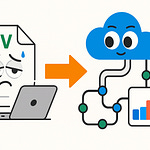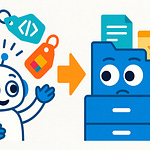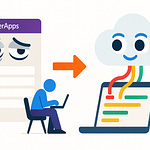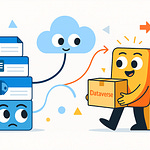If you’ve ever thought your .NET app is safe just because you’re running the latest framework, this might be the wake-up call you didn’t expect. OWASP’s upcoming update emphasizes changes worth rethinking in your architecture. In this video, you’ll see which OWASP 2025 categories matter most for .NET, three things to scan for in your pipelines today, and one common code pattern you should fix this week.
Some of these risks come from everyday coding habits you might already rely on. Stick around — we’ll map those changes into practical steps your .NET team can use today.
The Categories You Didn’t See Coming
The categories you didn’t see coming are the ones that force teams to step back and look at the bigger picture. The latest OWASP update doesn’t just shuffle familiar risks; it appears to shift attention toward architectural and ecosystem blind spots that most developers never thought to check. That’s telling, because for years many assumed that sticking with the latest .NET version, enabling defaults, and keeping frameworks patched would be enough. Yet what we’re seeing now suggests that even when the runtime itself is hardened, risks can creep in through the way components connect, the dependencies you rely on, and the environments you deploy into.
Think about a simple real‑world example. You build a microservice in .NET that calls out to an external API. Straightforward enough. But under the surface, that service may pull in NuGet packages you didn’t directly install—nested dependencies buried three or four layers deep. Now imagine one of those libraries gets compromised. Even if you’re fully patched on .NET 8 or 9, your code is suddenly carrying a vulnerability you didn’t put there. What happens if a widely used library you depend on is compromised—and you don’t even know it’s in your build? That’s the type of scenario OWASP is elevating. It’s less about a botched query in your own code and more about ecosystem risks spreading silently into production.
Supply chain concerns like this aren’t hypothetical. We’ve seen patterns in different ecosystems where one poisoned update propagates into thousands of applications overnight. For .NET, NuGet is both a strength and a weakness in this regard. It accelerates development, but it also makes it harder to manually verify every dependency each time your pipeline runs. The OWASP shift seems to recognize that today’s breaches often come not from your logic but from what you pull in automatically without full visibility. That’s why the conversation is moving toward patterns such as software bills of materials and automated dependency scanning. We’ll walk through practical mitigation patterns you can adopt later, but the point for now is clear: the ownership line doesn’t stop where your code ends.
The second blind spot is asset visibility in today’s containerized .NET deployments. When teams adopt cloud‑native patterns, the number of artifacts to track usually climbs fast. You might have dozens of images spread across registries, each with its own base layers and dependencies, all stitched into a cluster. The challenge isn’t writing secure functions—it’s knowing exactly which images are running and what’s inside them. Without that visibility, you can end up shipping compromised layers for weeks before noticing. It’s not just a risk in theory; the attack surface expands whenever you lose track of what’s actually in production.
Framing it differently: frameworks like .NET 8 have made big strides with secure‑by‑default authentication, input validation, and token handling. Those are genuine gains for developers. But attackers don’t look at individual functions in isolation. They look for the seams. A strong identity library doesn’t protect you from an outdated base image in a container. A hardened minimal API doesn’t erase the possibility of a poisoned NuGet package flowing into your microservice. These new categories are spotlighting how quickly architecture decisions can overshadow secure coding practices.
So when we talk about “categories you didn’t see coming,” we’re really pointing to risks that live above the function level. Two you should focus on today: supply chain exposure through NuGet, and visibility gaps in containerized deployments. Both hit .NET projects directly because they align so closely with how modern apps are built. You might be shipping clean code and still end up exposed if you overlook either of these.
And here’s the shift that makes this interesting: the OWASP update seems less concerned with what mistake a single developer made in a controller and more with what architectural decisions entire teams made about dependencies and deployment paths. To protect your apps, you can’t just zoom in—you have to zoom out.
Now, if new categories are appearing in the Top 10, that also raises the opposite question: which ones have dropped out, and does that mean we can stop worrying about them? Some of the biggest surprises in the update aren’t about what got added at all—they’re about what quietly went missing.
What’s Missing—and Why You’re Not Off the Hook
That shift leads directly into the question we need to unpack now: what happens to the risks that no longer appear front‑and‑center in the latest OWASP list? This is the piece called “What’s Missing—and Why You’re Not Off the Hook,” and it’s an easy place for teams to misjudge their exposure. When older categories are de‑emphasized, some developers assume they can simply stop worrying about them. That assumption is risky. Just because a vulnerability isn’t highlighted as one of the most frequent attack types doesn’t mean it has stopped existing.
The truth is, many of these well‑known issues are still active in production systems. They appear less often in the research data because newer risks like supply chain and asset visibility now dominate the numbers. But “lower visibility” isn’t the same as elimination. Injection flaws illustrate the point. For decades, developer training has hammered at avoiding unsafe queries, and .NET has introduced stronger defaults like parameterized queries through Entity Framework. These improvements drive incident volume down. Yet attackers can still and do take advantage when teams slip back into unsafe habits. Lower ranking doesn’t mean gone — it means attackers still exploit the quieter gaps.
Legacy components offer a similar lesson. We’ve repeatedly seen problems arise when older libraries or parsers hang around unnoticed. Teams may deprioritize them just because they’ve stopped showing up in the headline categories. That’s when the risk grows. If an outdated XML parser or serializer has been running quietly for months, it only takes one abuse path to turn it into a direct breach. The main takeaway is practical: don’t deprioritize legacy components simply because they feel “old.” Attackers often exploit precisely what teams forget to monitor.
This is why treating the Top 10 as a checklist to be ticked off line by line is misleading. The ranking reflects frequency and impact across industries during a given timeframe. It doesn’t mean every other risk has evaporated. If anything, a category falling lower on the list should trigger a different kind of alert: you must be disciplined enough to defend against both the highly visible threats of today and the quieter ones of yesterday. Security requires balance across both.
On the .NET side, insecure serialization is a classic example. It may not rank high right now, but the flaw still allows attackers to push arbitrary code or read private data if developers use unsafe defaults. Many teams reach for JSON libraries or rely on long‑standing patterns without adding the guardrails newer guidance recommends. Attacks don’t have to be powerful in volume to be powerful in damage. A single overlooked deserialization flaw can expose customer records or turn into a stepping stone for deeper compromise.
Attackers, of course, track this mindset. They notice that once a category is no longer emphasized, development teams tend to breathe easier. Code written years ago lingers unchanged. Audit rules are dropped. Patching slows down. For an attacker, these conditions create easy wins. Instead of competing with every security team focused on the latest supply chain monitoring tool, they target the forgotten injection vector still lurking in a reporting module or an unused service endpoint exposing data through an obsolete library. From their perspective, it takes less effort to go where defenders aren’t looking.
The practical lesson here is straightforward: when a category gets less attention, the underlying risk often becomes more attractive to attackers, not less. What disappeared from view still matters, and treating the absence as a green light to deprioritize is shortsighted. For .NET teams, the defensive posture should always combine awareness of emerging risks with consistent care for so‑called legacy weaknesses. Both are alive. One is just louder than the other.
Next, we’ll put this into context by looking at the kinds of everyday .NET code patterns that often map directly into these overlooked risks.
The Hidden Traps in .NET Code You Already Wrote
Some of the most overlooked risks aren’t hidden in new frameworks or elaborate exploits—they’re sitting right inside code you may have written years ago. This is the territory of “hidden traps,” where ordinary .NET patterns that once felt routine are now reframed as security liabilities. The unsettling part is that many of these patterns are still running in production, and even though they seemed harmless at the time, they now map directly into higher‑risk categories defined in today’s threat models.
One of the clearest examples is weak or partial input validation. Many projects still rely on client‑side checks or lightweight regex filtering, assuming that’s enough before passing data along. It looks safe until you realize attackers can bypass those protections with ease. Add in the fact that plenty of .NET applications still deserialize objects directly from user input without extra screening, and suddenly that old performance shortcut becomes a structural weakness. The concern isn’t a single missed bug—it’s the way repeated use of these shortcuts quietly undermines system resilience over time.
Another common case is the forgotten debug feature left open. A developer may spin up an endpoint during testing, use it for tracing, then forget about it when the service moves into production. Fast‑forward months later, and an attacker discovers it, using it to step deeper into the environment. What once seemed like a harmless helper for internal diagnostics turns into an entry point classified today as insecure design. The catch is that these mistakes rarely look dangerous until someone connects the dots from “small debugging aid” to “pivot point for lateral movement."
To illustrate how subtle these risks can be, picture a very basic GET endpoint that fetches a user by ID in .NET:
csharp
[HttpGet("user")]
public IActionResult GetUser(string id)
{
var user = _context.Users.Where(u => u.Id == id).FirstOrDefault();
return Ok(user);
}
On the surface, this feels ordinary—something you or your teammates may have written hundreds of times in EF Core or LINQ. But underneath, it exposes several quiet pitfalls. There’s no type constraint on the `id` parameter. There’s no check to confirm the caller is authorized to view a specific user. There’s also no traceability—no log is recorded if repeated unauthorized attempts are made. Now imagine this lives in an API gateway in front of multiple services. One unprotected pathway can ripple across your environment.
Here’s the scenario to keep in mind: what if any logged‑in user simply changes the `id` string to another value in the request? Suddenly, one careless line of code means accessing someone else’s profile—or worse, records across the entire database. It doesn’t take a sophisticated exploit to turn this oversight into a data breach.
So how do you tighten this endpoint without rebuilding the entire app? Three practical fixes stand out. First, strongly type and validate the input—for example, enforce a GUID or numeric constraint in the route definition so malicious inputs don’t slip through unchecked. Second, enforce an authorization check before returning any record: add `[Authorize]` and apply a resource‑based check so the caller only sees their own data. Third, add structured logging to capture failed authorization attempts, giving your team visibility into patterns of abuse before they escalate. These steps require minimal effort but eliminate the most dangerous blind spots in this routine bit of code.
This shift in perspective matters. In the past, discussions around “secure code” often meant debating whether or not a single statement could be injected with malicious values. Now the focus is broader: context matters as much as syntax. A safe‑looking method in isolation can become the weak link once it’s exposed in a distributed, cloud‑hosted environment. The design surface, not the line of code, defines the attack surface.
Newer .NET releases do offer stronger templates and libraries that can help, particularly around identity management and routing. But those are tools, not safeguards by default. You still need to configure authorization checks, enforce validation, and apply structured error handling. Running the newest framework version doesn’t automatically undo unsafe coding habits that slipped into earlier builds. Guardrails can reduce friction, but security depends on active effort, not passive inheritance.
The real takeaway is simple: some of the riskiest patterns in your applications aren’t the new lines of code you’ll write tomorrow—they’re the familiar routines already deployed today. Recognizing that reality is the first step toward cleaning them up. It also raises a bigger question: if many of these traps are already in your codebase, how do you prevent them from creeping back in during the next project? That’s where process and workflow matter just as much as code, and why the next step is about designing security into the way you build software from the start, not bolting it on at the end.
Designing Security into Your .NET Workflow
Most development teams still slip into the habit of treating security as something that gets checked right before release. Features get built, merged, deployed, and only afterward do scanners or external pen tests flag the problems. By that point, your choices are limited: you either scramble to patch while users are waiting, or you accept the risk and hope it doesn’t blow up before the next cycle. It’s no surprise this pattern exists—release schedules are tight, and anything that doesn’t produce visible features often feels optional. The catch is that this lagging approach doesn’t hold up anymore. Changes in OWASP’s latest list reinforce that problems are tied just as much to how you build as to what you code. If the threats are in the workflow itself, waiting until the end guarantees you’ll always be reacting instead of preventing.
Instead of treating security checks like late-stage firefighting, use the OWASP categories as inputs upfront. If issues like asset visibility or supply chain exposure are highlighted as systemic risks, then the moment you add a new NuGet dependency or publish a container image, that risk is already present. Scanning later won’t erase it. Embedding security into the design process at every stage means you intercept those exposures before they harden into production. It’s about making security a default part of how your pipeline runs—protecting by prevention, not by cleanup.
Right now many teams technically “have policies,” but those policies live in wikis, not in actual code. Architects write pages about input validation, parameterized queries, or how to manage secrets. Everyone nods, but once sprint pressure builds, convenience wins out. Pull requests slip past, and the written guidance barely registers in the day-to-day. That’s not bad intent—it’s simply how software delivery works under pressure. Unless those rules are baked into tools, they collapse quickly.
Dependency checks are a good example. Plenty of pipelines happily build and ship software without auditing packages until after deployment. To put it more directly: if a malicious dependency makes it through, the warning comes only once customers already have the compromised build. The bottom line is that testing security after deployment is late. You want those warnings before a release ever leaves CI/CD.
That’s why modern .NET DevSecOps approaches embed safeguards earlier. Think automated static analysis wired into every commit, dependency audits that run before build artifacts are packaged, and even merge checks that block pull requests containing severe issues. None of these rely on developers remembering wiki rules—they operate automatically every time code moves. Today, for example, you could enable automatic dependency auditing within your build pipeline, and you could add generation of a software bill of materials (SBOM) at every release. Both steps directly increase visibility into what’s shipping, without slowing developers down.
Platform features reinforce this direction. Minimal APIs in .NET 8 don’t push you toward broad, exposed endpoints—they encourage safer defaults. Built-in authentication libraries integrate with standard identity providers, meaning token handling or claims validation doesn’t require custom and error-prone code. These are not just “extras”; they’re guardrails. When you use them, you reduce both the risk of dangerous shortcuts and the developer overhead of securing everything by hand.
A clear way to frame these practices is through the ADDIE workflow. Each stage maps neatly to a concrete security action. In Analysis, inventory your components—build a list of every dependency and asset before adding them to a project. In Design, run a lightweight threat model to highlight insecure design choices while you’re still working on diagrams. In Development, integrate static analysis and dependency checks directly into CI, so problems are flagged before merges complete. In Implementation, configure your deployment pipeline to block releases that fail those checks. And in Evaluation, schedule periodic refreshes of your threat models so they align with the most current risks. These concrete steps aren’t abstract—they’re practical recommendations that .NET teams can start applying immediately.
The result is a workflow that stops being reactive and starts being resilient. Caught during design, a risky pattern costs minutes to address. Found during evaluation, it costs hours. Found in production, it may cost months—or worse, reputational trust. The more you shift left, the more your team saves. What feels like security overhead at first ends up buying you predictability and fewer last-minute fire drills.
In short, designing security into the workflow isn’t about paperwork or box-ticking. It’s about structuring processes so the right decision is the easy decision. That way developers aren’t relying on memory or intent—they’re guided by built-in checks and platform support. And the real test comes next: once you’ve built this workflow, how do you confirm that it’s working? How do you measure whether the safeguards you’ve integrated actually align with the risks OWASP is flagging now? That’s the next challenge we need to unpack.
Measuring Your Application Against 2025 Standards
Measuring your application against 2025 standards means shifting your yardstick. The question isn’t whether your pipeline is showing a green checkmark—it’s whether the tools you’re relying on actually map to the risks developers face now. Too many teams still use benchmarks built around yesterday’s threats, and that gap creates a dangerous illusion of safety. Passing scans may reassure, but reassurance is not the same thing as resilience.
This is a common failure mode across the industry. Companies lean on outdated security checklists thinking they’re current, but those lists often carry more weight for compliance than for protection. You still see forms focused on SQL injection or SSL settings from a decade ago, while whole categories of modern risk—like improper authorization flows and supply chain compromise—don’t even make the page. When teams celebrate compliance, they confuse completion with coverage. OWASP 2025 makes the distinction clearer: compliance doesn’t equal security, and the difference matters more than ever.
The real pitfall comes from assuming that passing existing tests means you’re covered. Pipelines may show that all dependencies are fully patched and static analysis found nothing critical, yet those same tools often miss structural flaws. A common failure mode, particularly in .NET environments, is broken object-level authorization. Automated tools may not be designed to spot a case where a user tweaks an ID in a request to pull data that isn’t theirs. On paper the app looks fine. In reality, the gap’s wide open. The tools weren’t negligent—they simply weren’t measuring what attackers now target most.
To close that gap, evaluation has to adapt. This doesn’t mean throwing out automation; it means layering it with checks aligned to modern categories. Three practical steps stand out for any .NET team. First, design automated integration tests that assert object-level authorization. A quick example: run a test where one signed-in user tries to access another user’s record, and confirm the API responds with a 403. Second, adopt API-level scanning tools that test authorization and identity flows. Instead of checking for outdated libraries, these scanners simulate real requests to see if role checks and token validation behave as expected. Third, round out what automation misses by running quarterly threat modeling workshops. Gather developers, architects, and security leads to ask “what if” questions that stretch across services: what if a container registry entry is outdated, or what if a messaging queue leaks data between tenants? None of these steps are heavy to implement, but they shift evaluation from box-checking to risk-mapping.
The important point is matching your tools to the actual threat model. Tooling scores can absolutely be misleading if the tools aren’t aligned to the categories you’re most vulnerable to. A polished dashboard showing zero issues is worthless if it doesn’t consider authorization weaknesses or hidden dependencies. Instead of blindly chasing 100 percent, focus on whether your checks are answering the hard questions OWASP is raising. Can your process confirm that only authorized users see their own data? Can it show exactly which dependencies ship in every build? Can it surface architectural risks that appear when services interact? If the answer is no, your score is incomplete no matter how good it looks on paper.
Manual review still earns a place in this mix because design risks can’t be scanned into the open. Logic flaws often arise from how services fit together—the gaps between components, not the lines of code inside them. Workshops where teams simulate misuse cases and identify architectural weak spots are where these issues surface. They’re also where developers internalize the difference between writing good code and designing secure systems. That’s the culture shift OWASP 2025 pushes toward, and why measurement today has to include both technical scans and human review.
The payoff here is simple: you stop measuring success by old metrics and start measuring against the risks attackers actually exploit right now. For .NET teams, that’s a sharper focus on authorization, visibility into supply chain dependencies, and validation of how cloud-native services combine in production. Treating evaluation as an ongoing cycle rather than a static gate means you catch tomorrow’s weak spots before they become yesterday’s breach.
So here’s a question for you directly: if you had to add just one security control to your CI pipeline this week, would it be an authorization test or a supply chain check? Drop your answer in the comments—your ideas might spark adjustments in how other teams approach this.
Because at the end of the day, measurement isn’t about filling out checklists. It’s about resetting how you define secure development. And once you start changing that definition, it leads naturally into the broader insight: the standards themselves aren’t just pointing out code mistakes, they’re pointing to how our development practices need to change.
Conclusion
So what should you leave with from all of this? Three clear moves to keep in mind. First: map OWASP 2025 categories to your architecture, not just to your code. Second: design security into your CI/CD pipeline now—don’t leave it as an afterthought. Third: measure with modern tests and regular threat modeling, not old checklists.
If this breakdown helped, hit like and subscribe so you don’t miss future walkthroughs. And drop a comment: which of the new OWASP categories feels like your biggest blind spot? Your answers help surface the real challenges .NET teams face day to day.
If you’re rebuilding a pipeline or want a quick checklist I can point you to, let me know in the comments—we’ll highlight the most common asks in future discussions.











